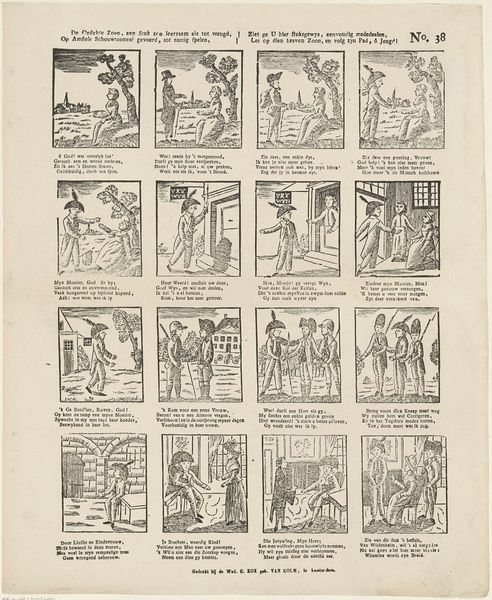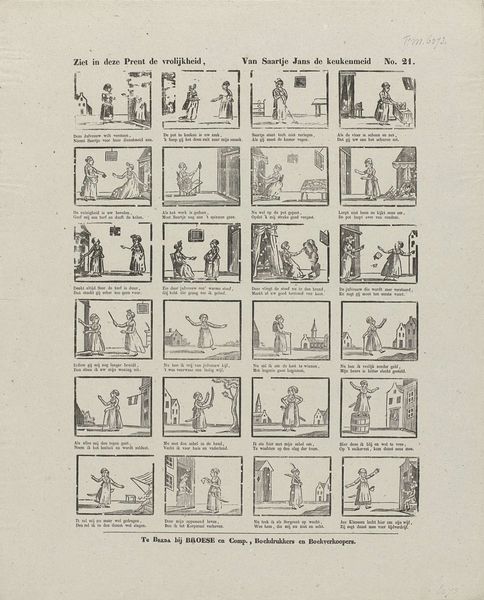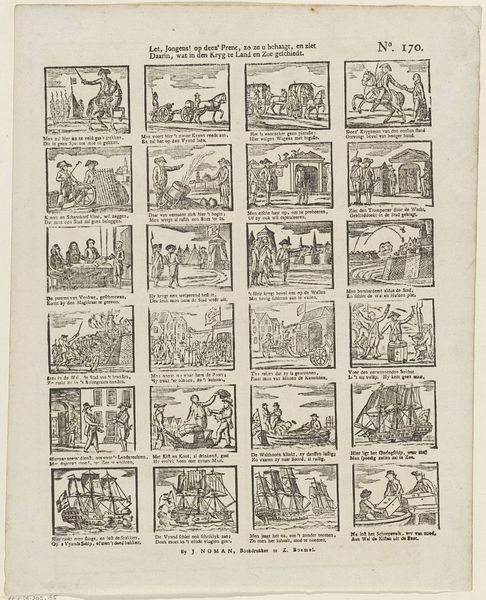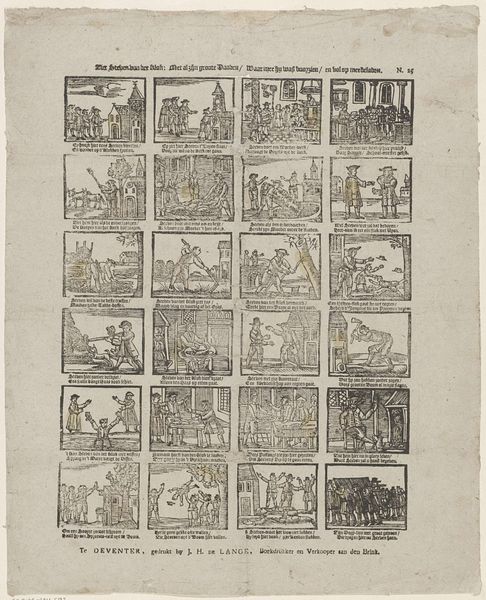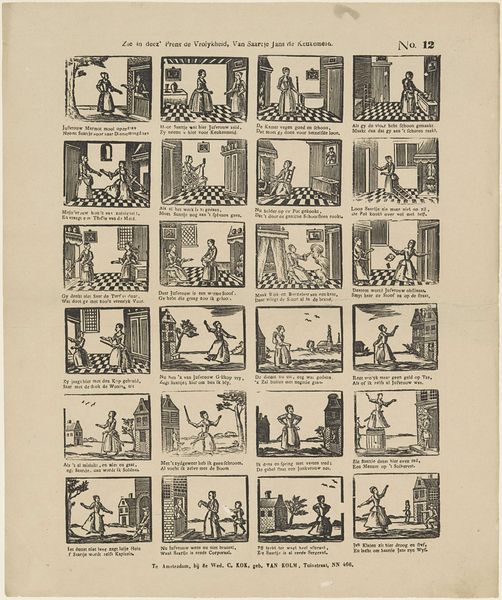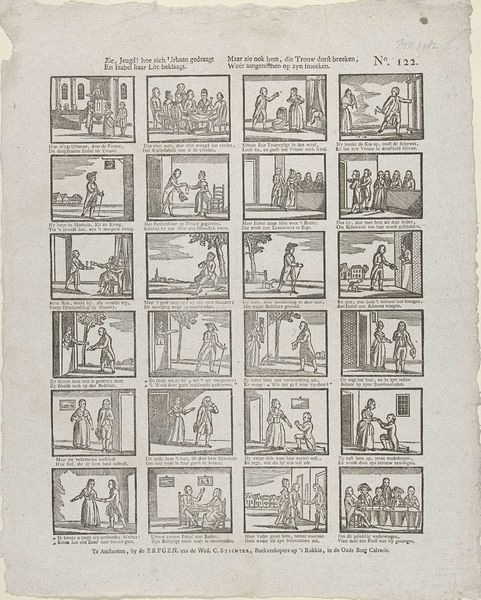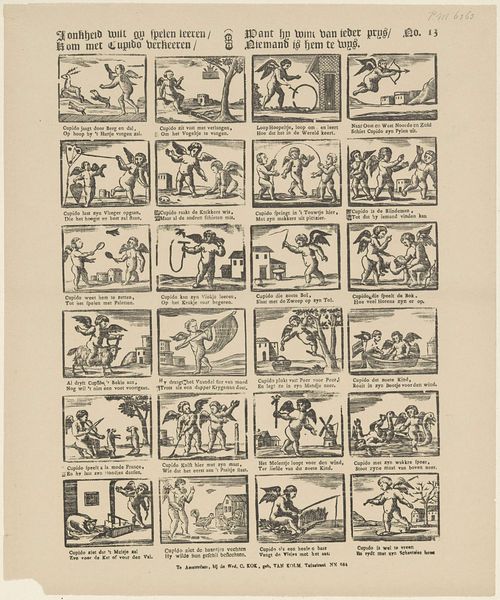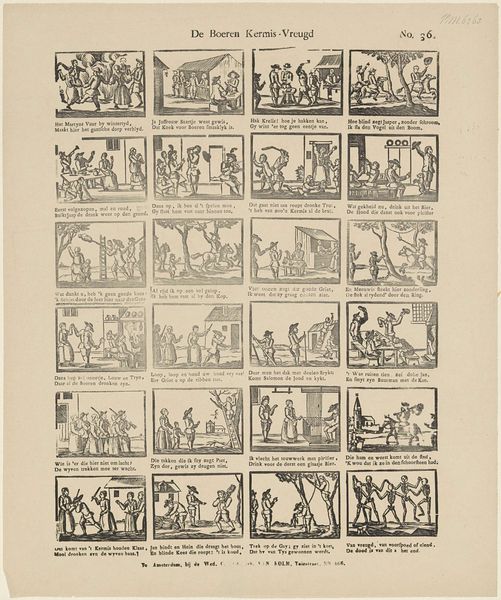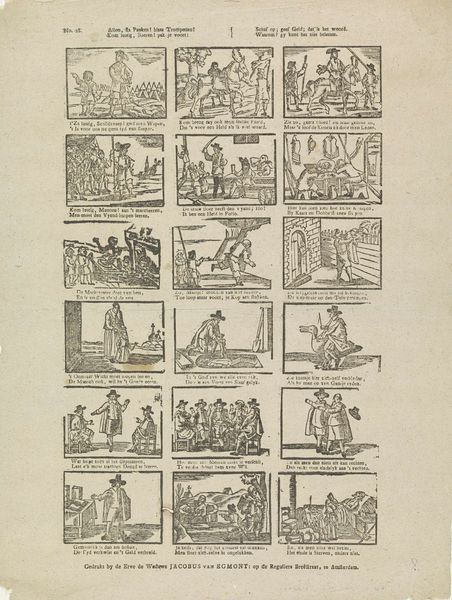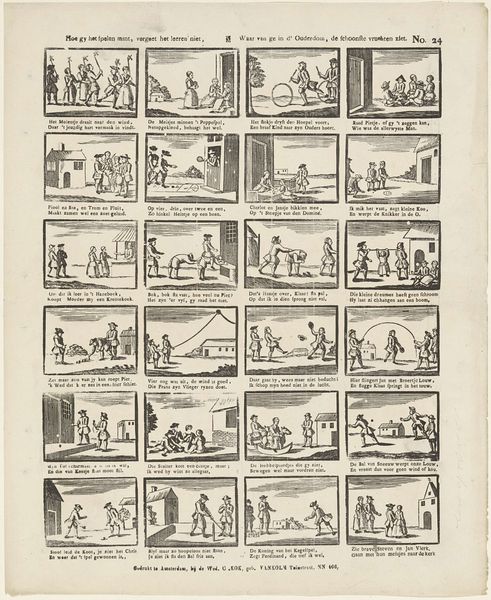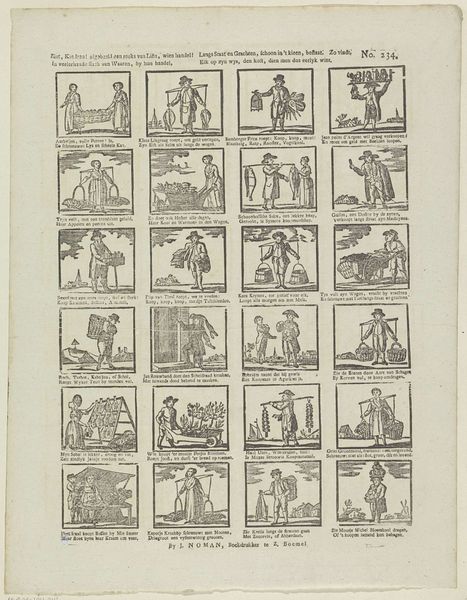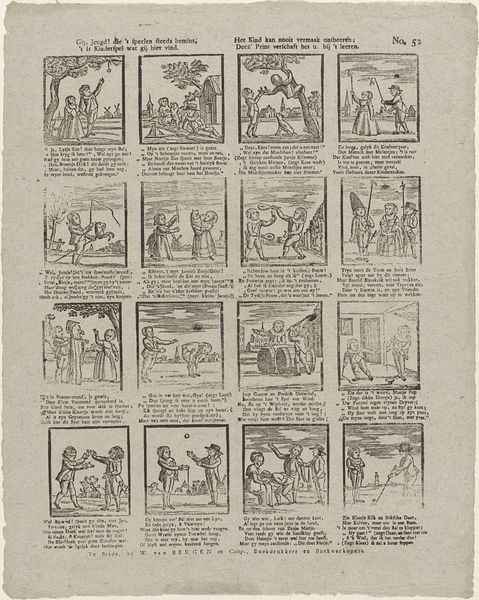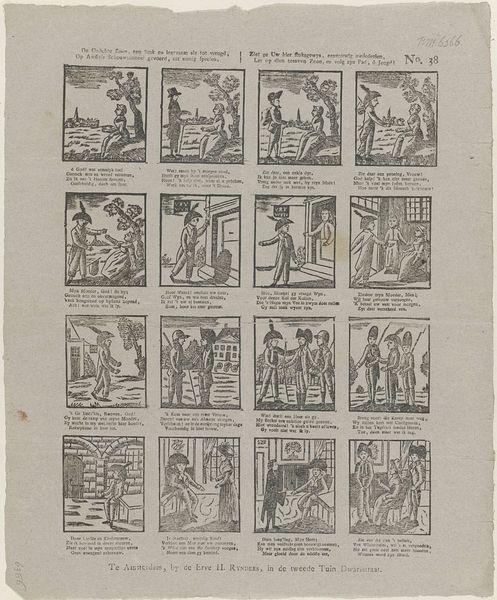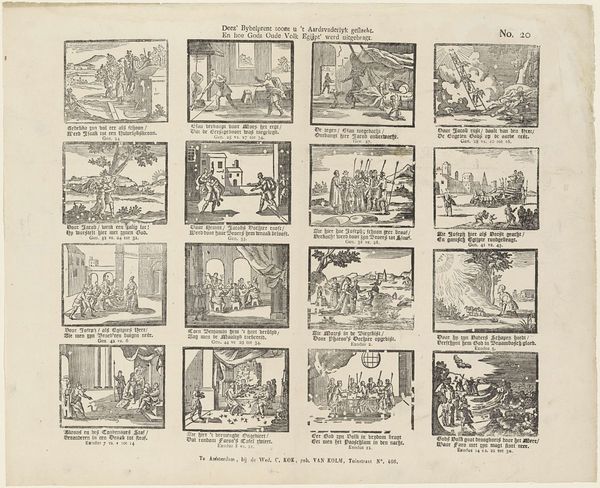
Deez' bybel-prent kan u, o jeugd! al spelend toonen, / Hoe God in 't oude Verbond reeds by zyn volk blyft wonen, / Maar die zyn wer veracht, de zwaarste straf bereidt, / Eerbiedig dus zyn woord en toon gehoorzaamheid 1842 - 1866
0:00
0:00
weduweckokvankolm
Rijksmuseum
print, paper, ink, engraving
#
narrative-art
#
dutch-golden-age
# print
#
paper
#
ink
#
genre-painting
#
engraving
Dimensions: height 392 mm, width 322 mm
Copyright: Rijks Museum: Open Domain
Curator: This engraving from the mid-19th century, titled "Deez' bybel-prent kan u, o jeugd! al spelend toonen," is an interesting piece by weduwe C. Kok-van Kolm in the Rijksmuseum collection. What are your initial impressions? Editor: It feels…didactic. The little scenes remind me of a comic strip, but each panel seems to be illustrating a very specific biblical story. How should we understand this work in the context of its time? Curator: Considering the piece's context reveals how art served multiple roles. It was common during the 19th century to use prints like this for moral and religious instruction, especially for young people. The narrative presented in each small vignette wasn’t just about religious education, but about instilling specific social and moral values within the context of the dominant cultural and political landscape. Look at the details within the scenes—do they remind you of any particular art movement? Editor: I can see elements of Dutch Golden Age painting, but simpler, more illustrative. So it’s deliberately referencing that style, even though it was made much later? Curator: Precisely! Think about what the reference to the Dutch Golden Age, with its emphasis on genre scenes and moralizing imagery, does for its contemporary audience. It connects the present with a perceived golden past, imbuing the depicted biblical stories with an established authority. The museum where this work is kept also carries particular weight – what might it mean for a national institution to host this work today? Editor: I see what you mean. It places religious instruction within the context of national identity and cultural heritage. I hadn’t considered how powerful a simple print could be. Curator: Absolutely. This work offers rich insights into how religious, social, and artistic influences coalesced within a specific historical moment. Editor: That's fascinating. Now I see that it's not just a series of illustrations, but a cultural artifact reflecting societal values and the role of art in shaping those values. Curator: Indeed, seeing art as a product of social forces gives us a more nuanced interpretation of this seemingly simple engraving.
Comments
No comments
Be the first to comment and join the conversation on the ultimate creative platform.
